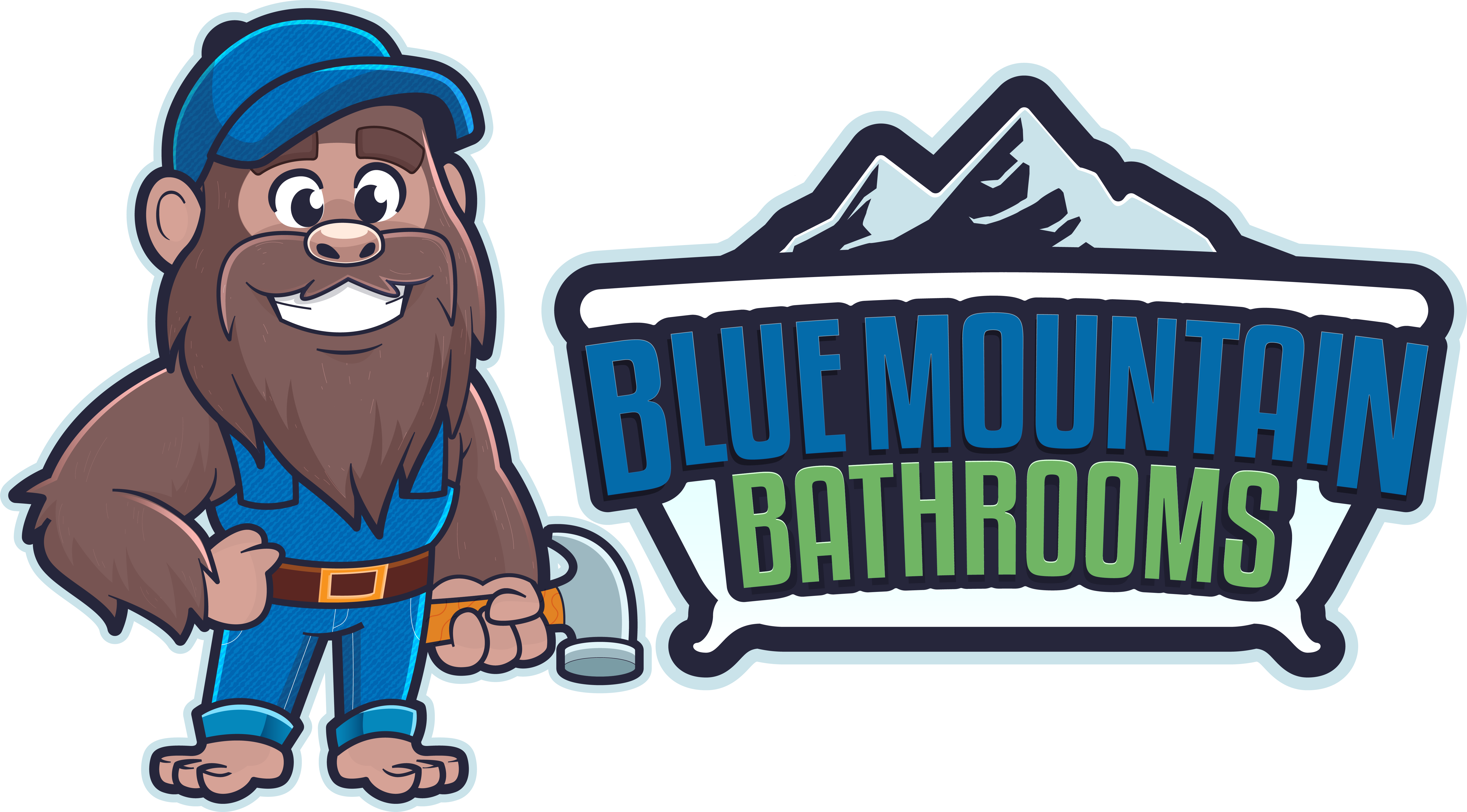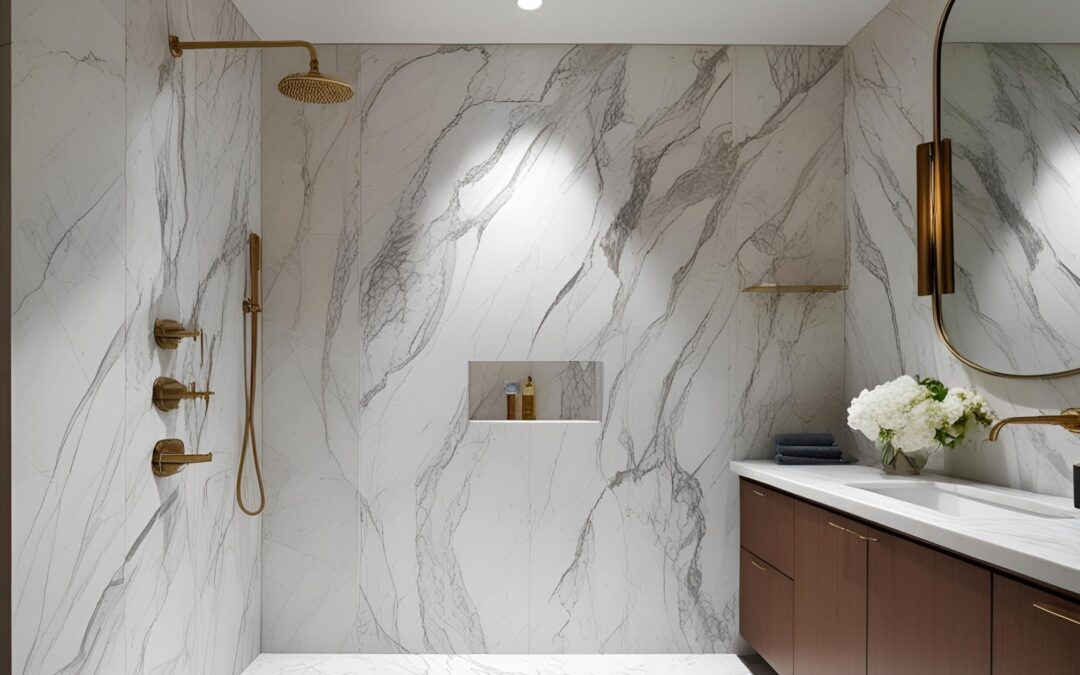Central Pennsylvania homeowners seeking to transform their bathroom space can explore countless bathroom shower ideas that blend function with style. Modern shower design has evolved beyond basic functionality to create spaces that serve as personal retreats within the home. Whether you’re working with a small bathroom or planning a complete renovation, the right shower design can transform your entire space into a luxurious sanctuary.
The key to successful design lies in understanding how different elements work together to create visual interest while maintaining practical functionality. From walk in shower configurations to carefully selected shower tiles, each design choice contributes to the overall atmosphere and usability of your bathroom space.
Bathroom Shower Ideas: Walk In Shower Excellence
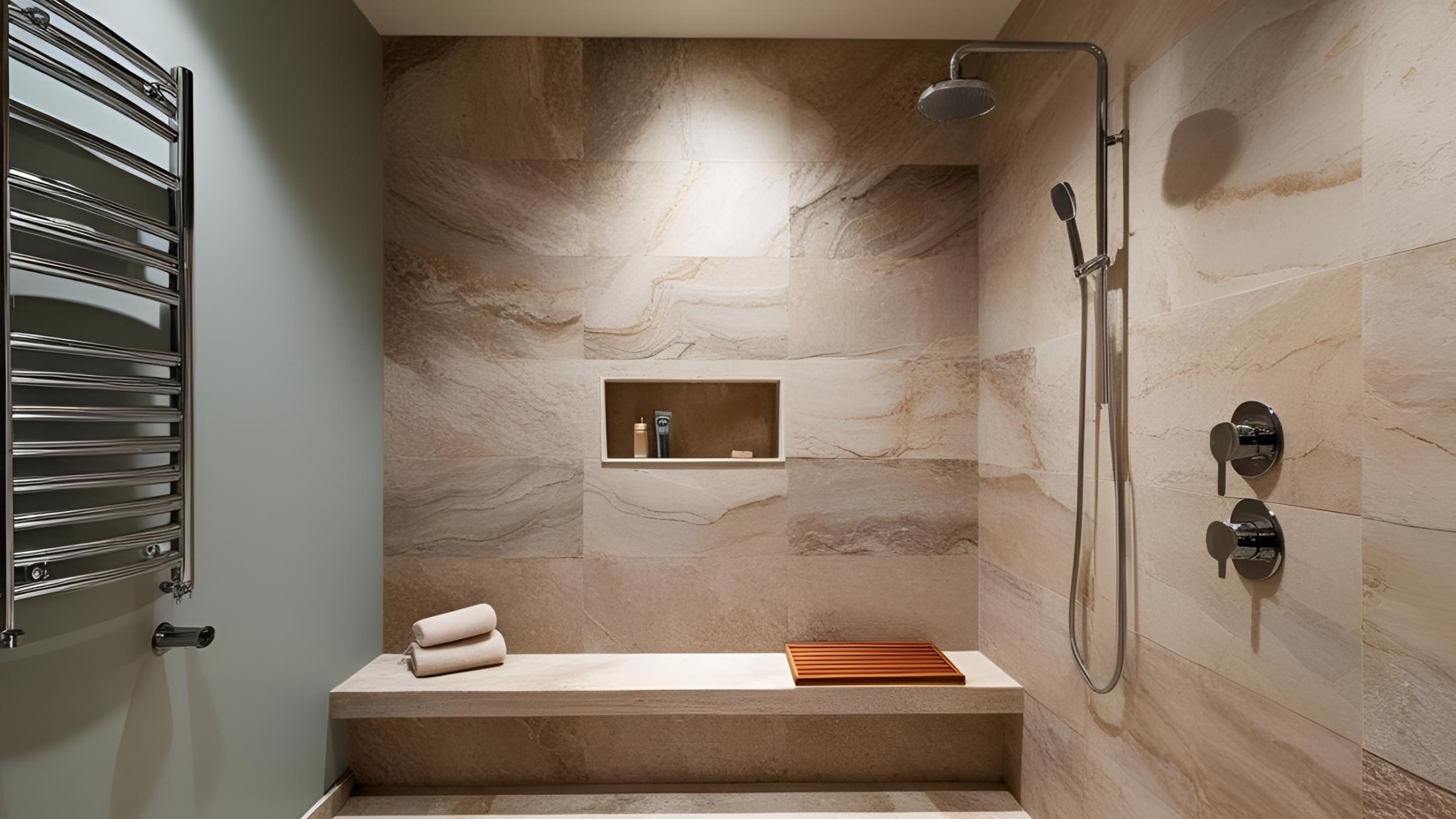
Walk in shower designs represent the pinnacle of modern primary bathroom luxury. These spacious configurations eliminate barriers and create seamless transitions between shower areas and the rest of the bathroom. A well-designed walk in shower can make even a small bathroom feel larger and more open.
The beauty of walk in shower ideas lies in its versatility. You can customize every aspect, from the shower walls to the primary bathroom floor tile selection. Glass shower doors provide the perfect finishing touch, maintaining the open feel while containing water within the shower area. Frameless glass door options create an even more spacious appearance by eliminating visual barriers.
When planning your walk in shower, consider the entire bathroom layout. The shower should complement existing fixtures while serving as a stunning focal point. Natural light plays a crucial role in making walk in shower spaces feel bright and welcoming.
Big Blue’s Tip: Install a built in shower bench along one of your shower walls to add both functionality and visual appeal. This feature provides a comfortable seating area while creating additional storage space below.
Bathroom Design: Creating Cohesive Spaces

Effective design requires careful attention to how each element works with others throughout the space. Your shower design should complement the bathroom floor, wall treatments, and overall aesthetic vision. The goal is creating a thoughtfully designed space that feels intentional rather than random.
Color coordination plays a vital role in successful bath design. Interior designers choose a primary color palette and carry it throughout the space, from floor tile selections to shower wall treatments. This approach creates unity while allowing for interesting accent pieces that add personality.
Storage solutions integrated into your shower design can significantly impact the functionality of your bathroom space. Built in bench features, corner shelving, and recessed niches provide extra storage without cluttering the clean lines of your walk in shower.
When working with small bathroom constraints, consider a Bathroom Tub to Shower Conversion: A Modern Upgrade to transform cramped, outdated spaces into functional, beautiful shower areas that better serve modern lifestyle needs.
Floor Tile: Foundation of Great Design

The floor tile you select sets the stage for your entire bath design. In shower areas, floor tile must balance safety, durability, and aesthetic appeal. Slip-resistant surfaces are essential, but you don’t need to sacrifice style for safety.
Large format floor tiles create a seamless appearance that makes spaces feel larger and more luxurious. However, smaller floor tile options offer better grip and easier maintenance in high-traffic areas. The grout lines between smaller tiles provide additional texture that enhances safety.
Color selection for floor tile should coordinate with your overall design scheme while providing enough contrast to define the shower area. Neutral tones offer flexibility for future design changes, while bold colors create dramatic focal points.
Pebble Tile: Natural Texture and Safety
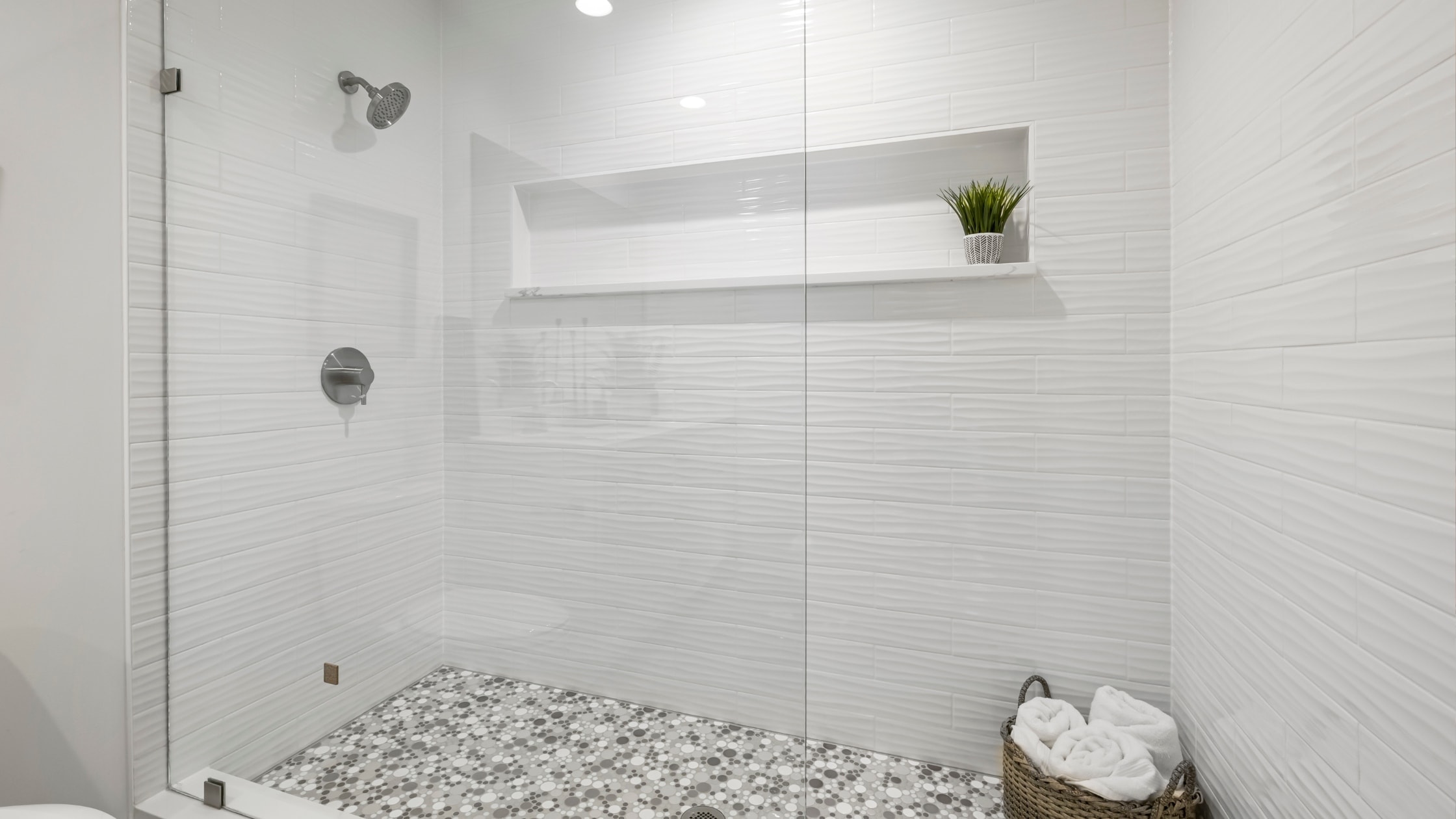
Pebble tile brings the spa-like experience of natural stones directly into your walk in shower. These small, rounded stones provide excellent traction while creating beautiful texture that adds visual interest to shower floors. The organic shapes and natural variations in pebble tile create a connection to nature that enhances the biophilic design elements in your bathroom.
Installation of pebble tile requires careful attention to proper drainage and sealing. The irregular surfaces provide natural water channels while the individual stones offer superior grip compared to smooth tile surfaces. This combination makes pebble tile an excellent choice for shower floors where safety is paramount.
Mosaic Tile: Artistic Expression
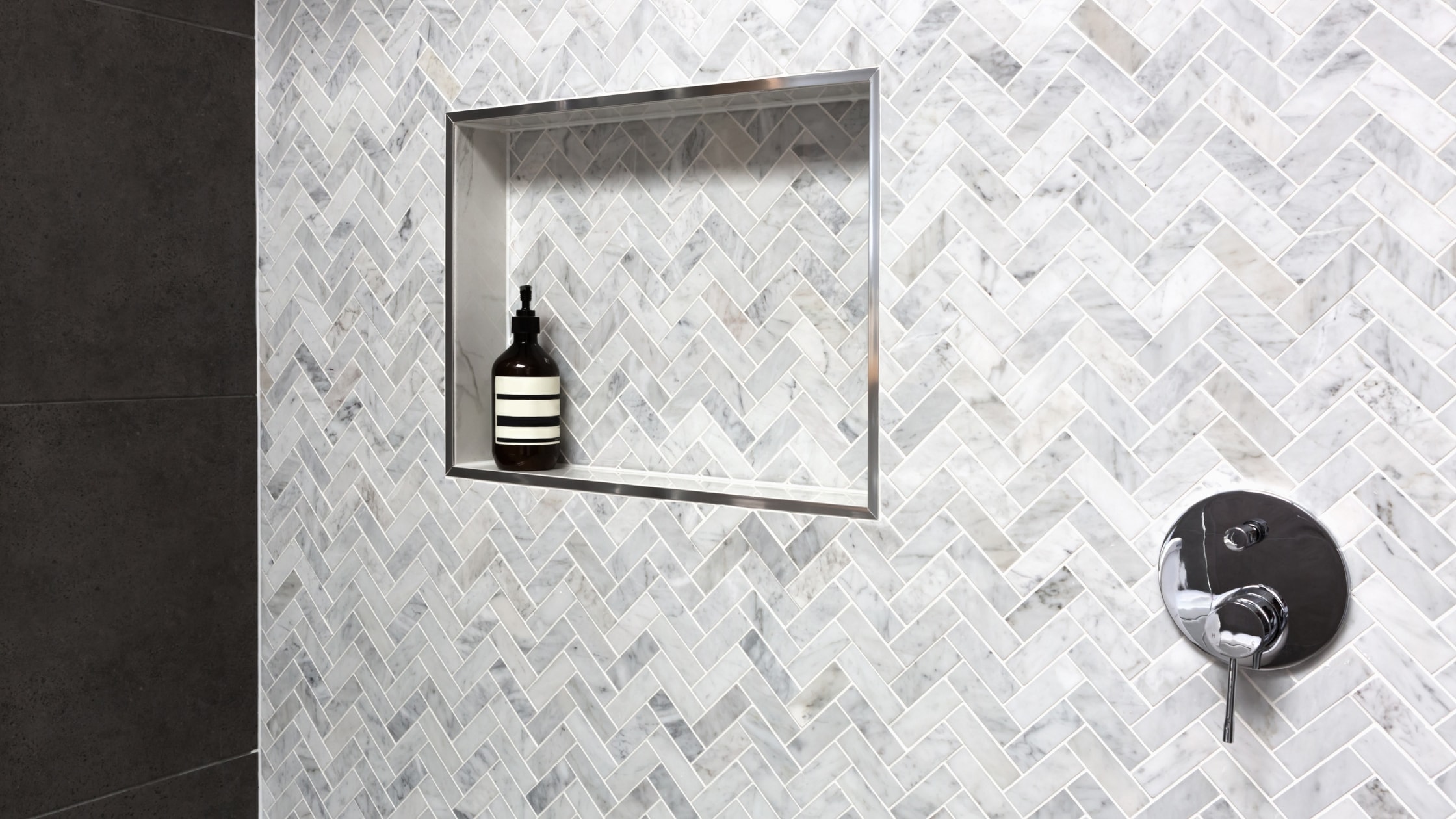
Mosaic tile opens endless possibilities for creative expression within your shower design. These small tiles can create intricate patterns, geometric shapes, or stunning accent walls that serve as dramatic focal points. The variety of materials available in mosaic tile formats includes glass, ceramic, natural stone, and metal options.
Using mosaic tile on the back wall of your walk in shower creates a stunning visual centerpiece without overwhelming the space. You can incorporate mosaic tile borders, create gradient effects, or design complex patterns that reflect your personal style. The key is maintaining balance between detailed mosaic work and simpler surrounding surfaces.
Mosaic tile installations require skilled craftsmanship to achieve professional results. The small size of individual tiles means precise alignment and consistent grout lines are essential for the finished appearance. However, the visual impact of well-executed mosaic tile work transforms ordinary showers into works of art.
Design Applications for Mosaic Tile
Consider using mosaic tile to create accent strips that run horizontally around your shower walls. This technique adds visual interest while maintaining clean lines throughout the space. Alternatively, create a mosaic tile feature wall behind your shower controls for a stunning focal point that draws the eye.
Mosaic tile works beautifully for creating seamless transitions between different areas of your bathroom. Use matching mosaic borders around mirrors, vanities, and shower areas to tie the entire space together cohesively.
Big Blue’s Tip: Install LED lighting within recessed shower niches to create ambient lighting that enhances the luxurious feel of your walk in shower while providing practical illumination for stored items.
Focal Point Creation
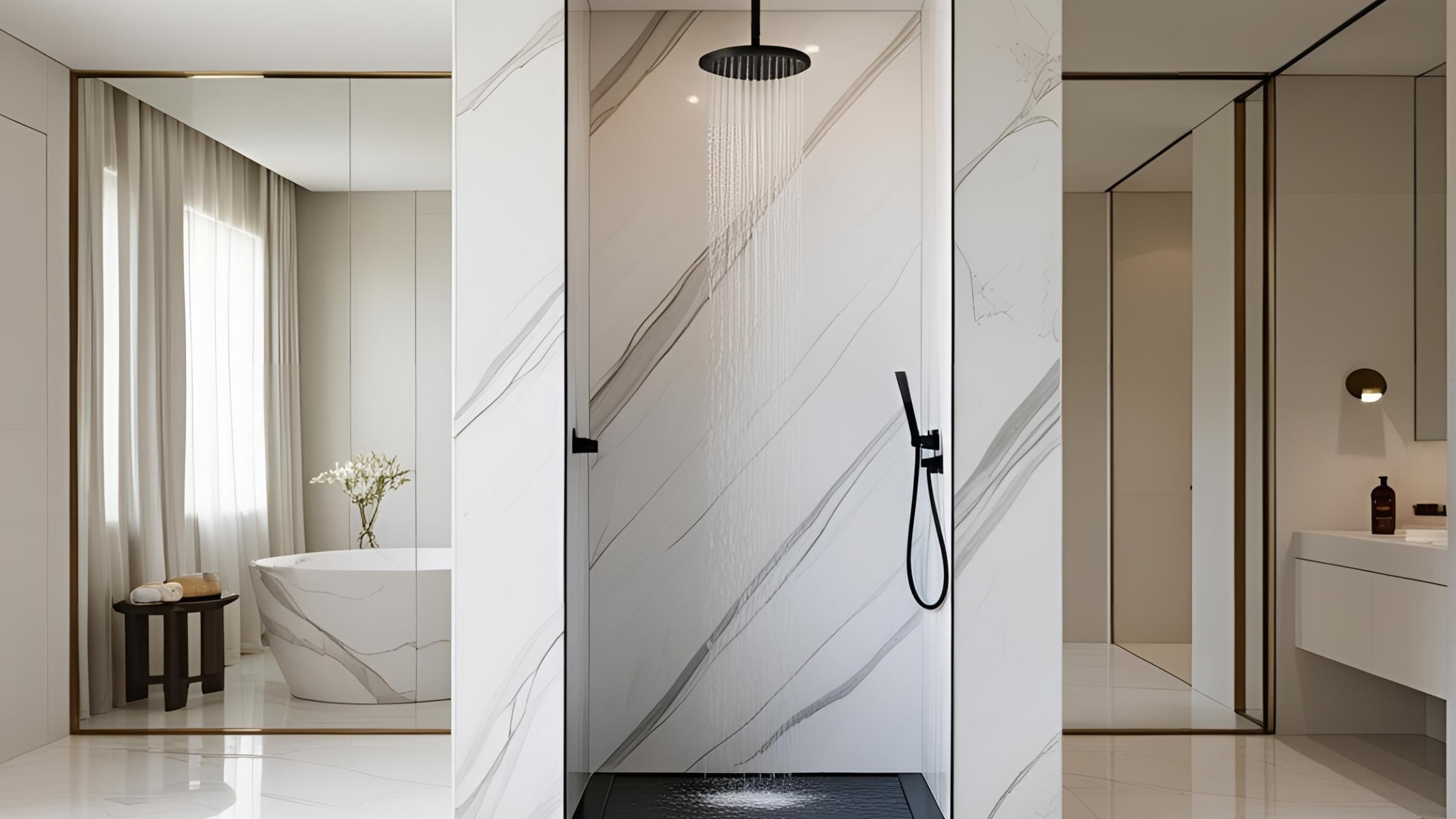
Every stunning bathroom needs a strong focal point that anchors the design and creates visual impact. In walk in shower areas, this focal point might be a dramatic subway tile pattern, a statement wall treatment, or an architectural element like a built in bench or unique shower door configuration.
Creating an effective focal point requires balancing bold elements with more subdued surrounding features. If you choose a dramatic mosaic tile back wall as your focal point, keep other walk in shower walls simple to avoid visual competition. The goal is directing attention to your chosen feature while maintaining overall harmony.
Lighting plays a crucial role in highlighting your focal point effectively. Natural light from windows can illuminate stone textures beautifully, while strategically placed artificial lighting can emphasize tile patterns or architectural details during evening hours.
Bold Tile: Making Statement Walls
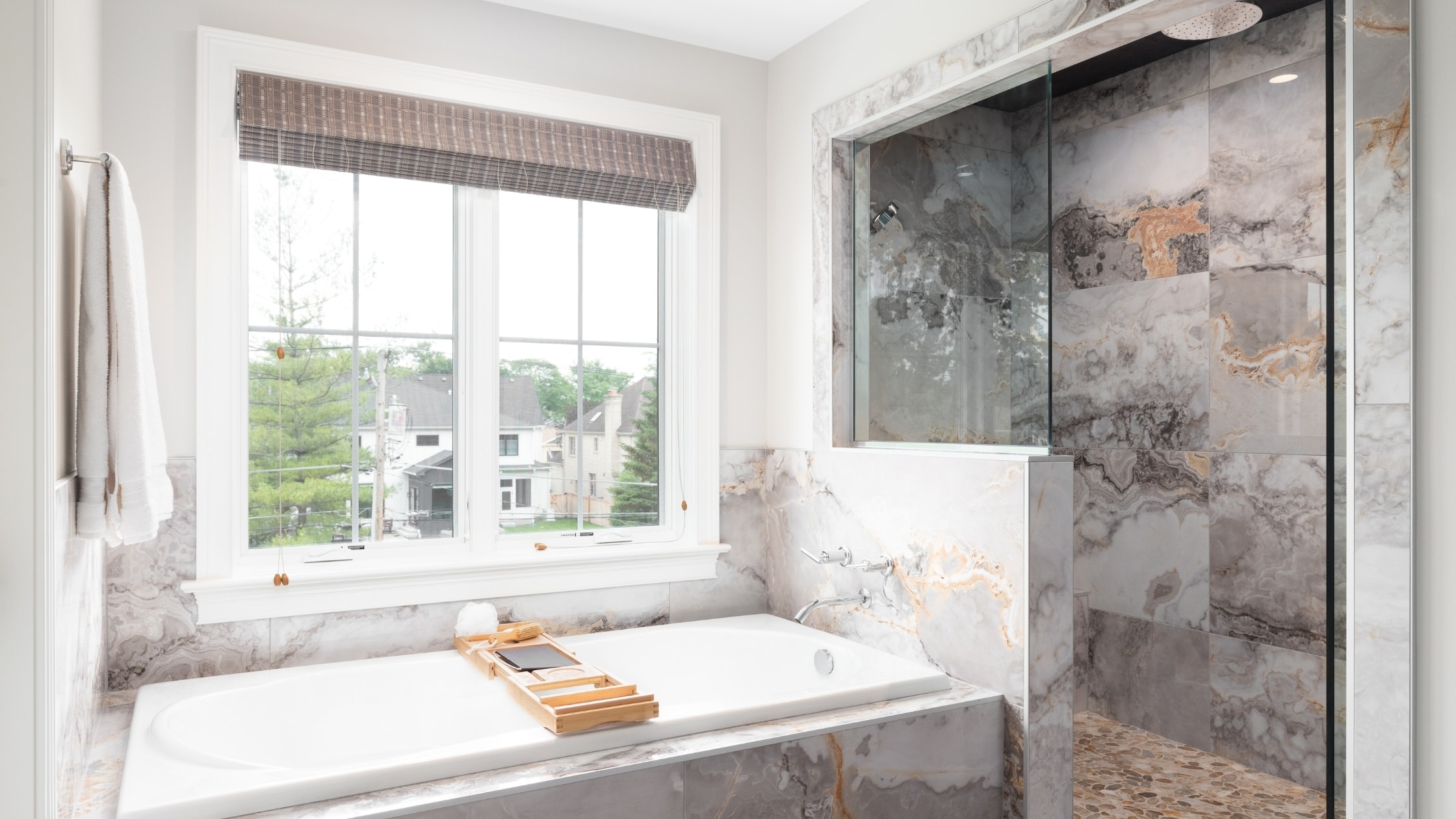
Bold tile choices can transform your walk in shower from functional to fabulous. Whether you prefer geometric patterns, oversized formats, or dramatic colors, bold tile creates immediate visual impact that sets your bathroom apart from typical designs.
When incorporating bold tile into your shower design, consider the scale of your space and the intensity of the pattern or color. A small bathroom might benefit from bold tile used as an accent rather than covering entire walls. Conversely, larger spaces can handle more extensive bold tile applications.
The key to successful bold tile integration lies in balancing statement pieces with calmer elements. Pair bold patterned tiles with solid colors, or combine bright colors with neutral tones to create sophisticated contrast rather than overwhelming visual chaos.
Incorporating Bold Patterns
Geometric shapes in tile form offer endless possibilities for creating striking visual effects. Hexagonal tiles, chevron patterns, and diamond layouts can transform plain walls into dynamic focal points. The key is selecting patterns that complement your overall design rather than competing with other elements.
Consider using bold tile patterns on just one wall of your walk in shower to create a stunning accent without overwhelming the space. This approach allows you to incorporate dramatic design elements while maintaining the serene atmosphere essential for a relaxing shower experience.
Add Texture: Dimensional Design Elements
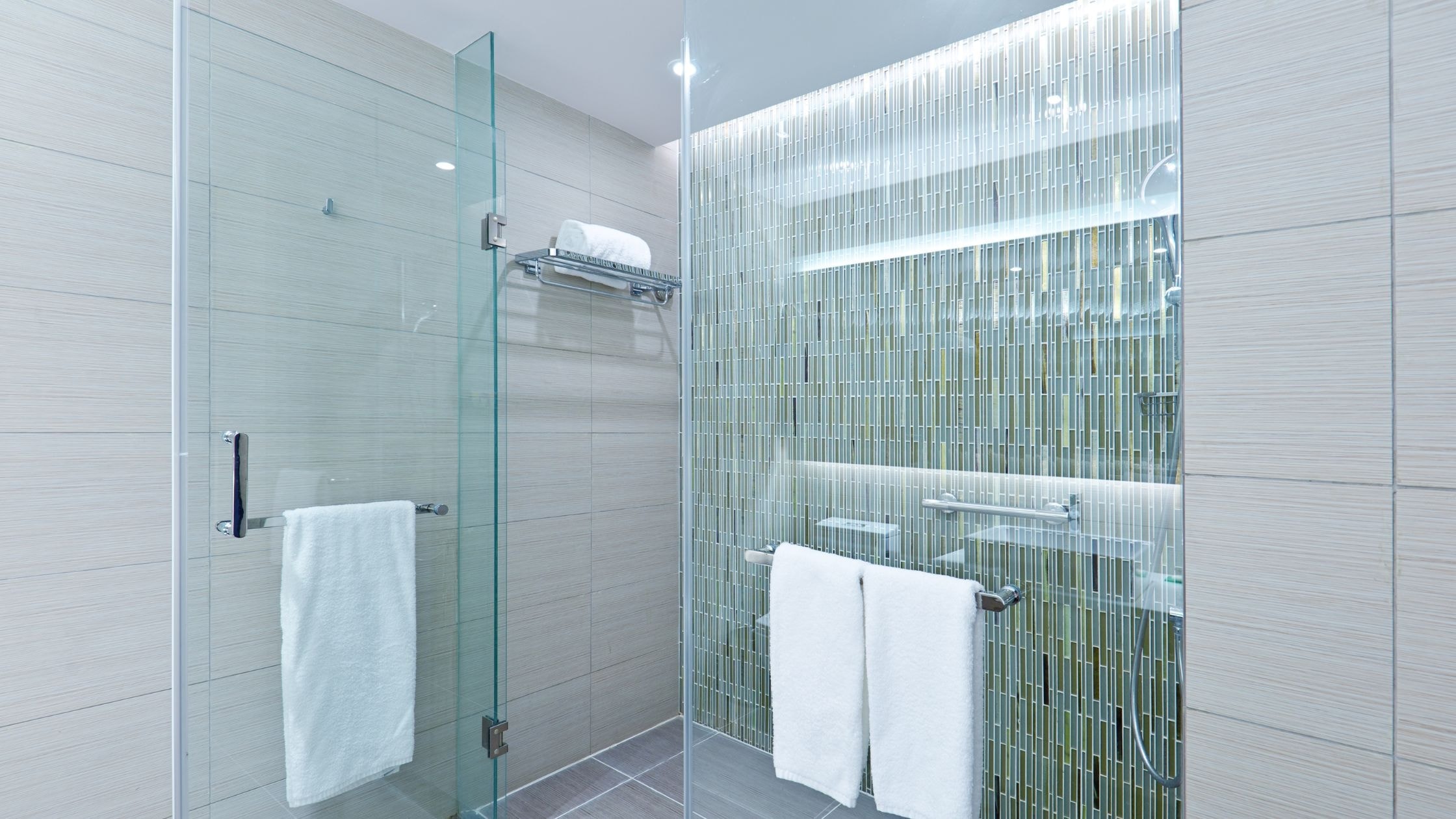
Texture adds depth and visual interest to walls without relying solely on color or pattern. Three-dimensional tiles, raised patterns, or mixed-finish surfaces create shadows and highlights that change throughout the day as lighting conditions shift.
Adding texture through tile selection can make small bathroom spaces feel larger by creating visual complexity that tricks the eye. Subway tile installed in herringbone patterns, for example, adds texture while maintaining classic style. Similarly, combining matte and glossy finishes on the same color tile creates subtle texture variations.
Natural materials like stone and wood-look tiles bring inherent texture that adds warmth and character to shower spaces. These organic textures create connections to nature that enhance the overall ambiance of your bathroom space.
Mixing Textures Effectively
Successful texture mixing requires restraint and careful planning. Combine no more than two or three different textures within your walk in shower to avoid visual chaos. For example, pair smooth glass subway tile with textured natural stone accents and a pebble tile shower floor for a sophisticated layered look.
Consider how different textures will feel underfoot and against skin during shower use. Rough textures provide excellent grip and visual interest but might be uncomfortable for prolonged contact. Balance practical considerations with aesthetic goals.
Biophilic Design: Connecting with Nature
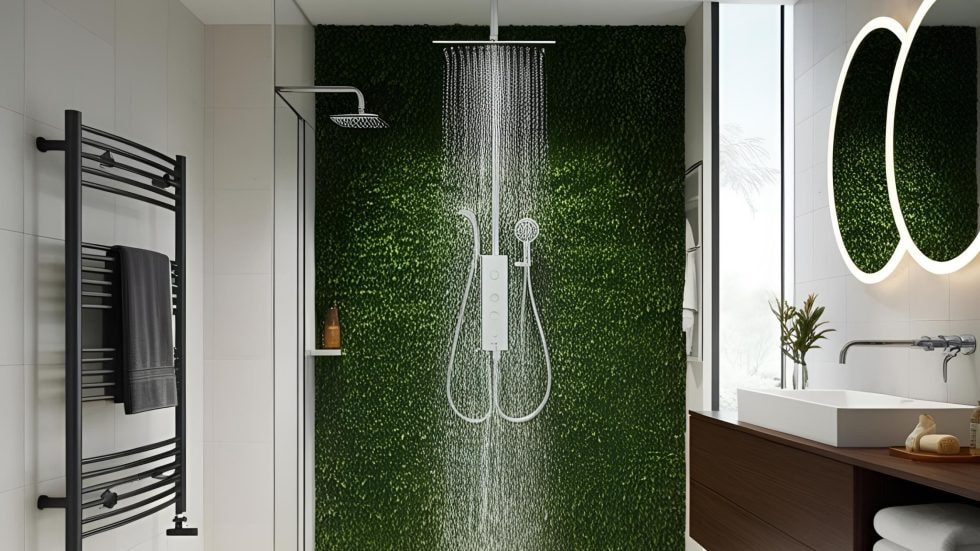
Biophilic design principles emphasize connections between indoor spaces and the natural world. In bathroom shower design, this approach creates calming environments that reduce stress and promote wellness. Natural materials, organic shapes, and living elements transform your shower into a personal retreat.
Incorporating biophilic design elements can be as simple as choosing natural stone tiles or as complex as installing living plant walls. The key is creating authentic connections to nature rather than superficial decorative elements. Real materials and organic forms resonate more deeply than artificial alternatives.
Natural light plays a crucial role in biophilic bathroom design. Skylights, clerestory windows, or glass block installations bring daylight into shower areas while maintaining privacy. This natural illumination enhances the beauty of natural materials while creating dynamic lighting that changes throughout the day.
Did you know? Studies show that biophilic design elements in bathrooms can reduce stress hormones by up to 15% compared to purely artificial environments, making your daily shower routine more therapeutic.
Frequently Asked Questions
What is the most popular shower tile size for walk in showers?
Large format tiles, typically 12×24 inches or larger, remain the most popular choice for walk in shower walls because they create seamless appearances with minimal grout lines. However, smaller mosaic tiles work beautifully for shower floors and accent areas.
How do I choose between subway tile and natural stone for my shower walls?
Subway tile offers classic appeal, easy maintenance, and budget-friendly pricing, making it ideal for timeless designs. Natural stone provides unique character and luxury appeal but requires more maintenance and higher initial investment. Consider your lifestyle, budget, and interior design preferences when making this choice.
Can I install a walk in shower in a small bathroom?
Yes, small walk in shower installations can actually make compact bathrooms feel larger by eliminating the visual barrier of a shower curtain or door. Careful planning ensures adequate space while maximizing functionality and visual appeal.
What type of shower door works best with different tile choices?
Frameless glass shower doors complement bold tile patterns and natural stone installations by providing unobstructed views of beautiful tile work. Framed doors work well with simpler tile choices and can add architectural detail to minimalist designs.
How do I maintain grout lines in my new shower?
Regular cleaning with appropriate products and annual sealing prevents staining and water damage. Darker grout colors hide stains better than white bathroom grout, while epoxy grout offers superior stain resistance compared to traditional cement-based options.
What lighting works best in walk in showers?
Recessed LED fixtures provide even illumination without interfering with shower design, while accent lighting within niches or behind glass tiles creates dramatic effects. Natural light from skylights or windows offers the most flattering illumination for natural materials.
For inspiration on incorporating modern technology into your bathroom design, check out our guide to Innovative Bathroom Gadgets to Modernize Your Space which explores cutting-edge solutions for contemporary bathrooms.
Transform Your Bathroom Into a Personal Sanctuary
The transformation of your bathroom space through thoughtful shower design creates lasting value and daily enjoyment. Whether you choose natural stone elegance, bold tile drama, or biophilic design principles, the key lies in balancing aesthetic vision with practical functionality. Professional guidance ensures your bathroom shower ideas become beautiful, functional realities that serve your family for years to come.
Your walk in shower represents more than just a functional space – it becomes a daily retreat where you begin and end each day. The careful selection of shower tiles, the integration of natural light, and the thoughtful placement of design elements like a built in bench or mosaic tile accents contribute to creating a luxurious space that enhances your quality of life.
From small bathroom transformations to expansive primary bath renovations, the principles of great shower design remain consistent. Focus on creating seamless transitions between different areas, incorporate texture and visual interest through strategic tile choices, and ensure that every element serves both form and function. The result is a bathroom space that feels intentionally designed rather than merely assembled.
According to the National Association of Home Builders, well-designed bathroom renovations consistently rank among the top home improvements for both personal satisfaction and resale value, making your shower design investment both personally and financially rewarding.
For comprehensive guidance on bathroom renovation projects, explore our detailed resource on The Ultimate Guide to Bathroom Remodels which covers planning, budgeting, and execution strategies for successful bathroom transformations.
